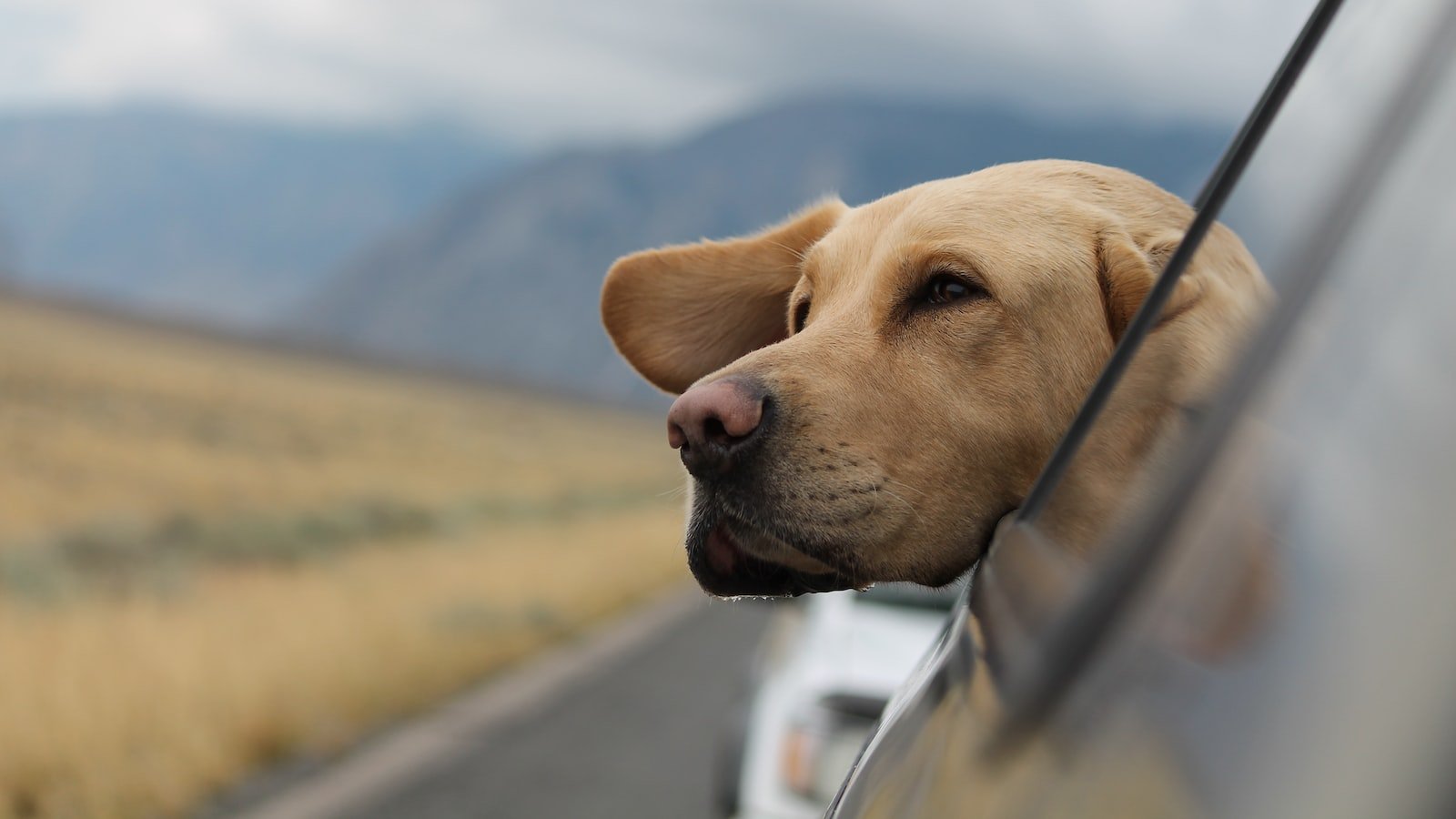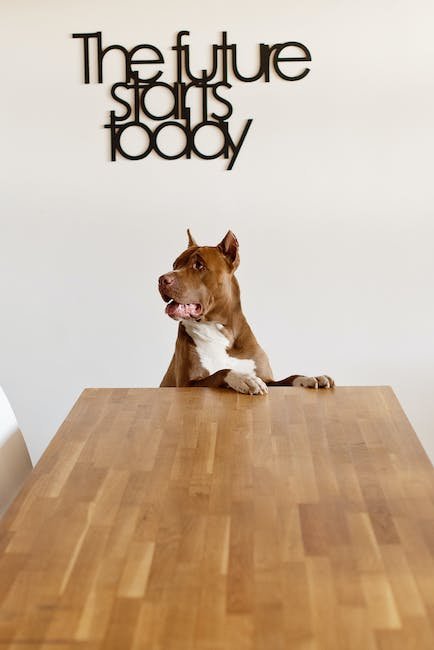Woof! Calling all dog lovers and aspiring dog trainers – we have a paw-some secret to share with you! If you’re looking to unleash your pup’s potential and embark on a journey towards perfect obedience, then it’s time to unwrap the mystery of the dog training reward hierarchy. A canine code cracked by the trainers in the know, understanding this hierarchy is key to deciphering your furry friend’s motivations and molding their behavior. So, whether you’re a seasoned pro or a novice in the realm of dog training, join us as we delve into the fascinating world of rewards, praises, and tasty treats that make tail-wagging magic happen. Get ready to uncover the secrets to a well-trained, happy hound and strengthen your bond with your four-legged companion on a whole new level. It’s time to paws and get ready for a doggone good article!
Table of Contents
- Understanding the Dog Training Reward Hierarchy
- Harnessing the Power of Positive Reinforcement
- Unlocking Your Dog’s Motivation for Effective Training
- Strategies and Tips for Utilizing Rewards in Dog Training
- Choosing the Right Rewards to Maximize Training Success
- Q&A
- Final Thoughts

Understanding the Dog Training Reward Hierarchy
Exploring the Dog Training Reward Hierarchy
Reward-based dog training is a key component in establishing a strong bond with your furry companion. By , you can effectively communicate and shape their behavior in a positive and enjoyable way. This hierarchy categorizes rewards based on their value to the dog, helping you create an effective training plan tailored to their unique needs and preferences.
The Hierarchy:
- Food: A delicious treat is often at the top of the reward hierarchy. It serves as a powerful motivator for most dogs, especially during initial training sessions. Whether it’s a tasty morsel or their favorite chew, food rewards can reinforce desired behaviors.
- Play: Dogs love to play, and certain games or toys can be highly rewarding. A game of fetch or their beloved squeaky toy can serve as a valuable reward during training. It contributes to their physical and mental stimulation, further strengthening the positive association.
- Praise and Affection: Dogs are social creatures and thrive on love, attention, and praise from their humans. Verbal cues such as “good boy” or a pat on the head can convey your approval and become powerful rewards. Remember to use a positive and enthusiastic tone to reinforce their positive behavior.
- Access to Resources: Allowing your dog access to something they desire, like going outside for a walk or granting permission to explore an intriguing area, can be an effective reward. By using these privileges as rewards, you can encourage and reinforce their good behavior in specific situations.
By utilizing the dog training reward hierarchy, you can customize your training approach based on what motivates your dog the most. Identifying and offering the right rewards at the appropriate time will not only help them learn faster but also keep training sessions engaging and enjoyable for both of you. Remember, consistency and positive reinforcement go hand in paw when it comes to effective dog training!
Harnessing the Power of Positive Reinforcement
When it comes to motivating and influencing behavior, positive reinforcement has proven to be an incredibly powerful tool with remarkable results. By focusing on rewarding desired actions instead of punishing negative behavior, individuals are more likely to be encouraged and motivated to continue those positive habits.
One of the key advantages of positive reinforcement is its ability to create a nurturing and encouraging environment. When people are acknowledged and rewarded for their efforts and achievements, it boosts their self-confidence and fosters a sense of belonging and accomplishment. It not only strengthens relationships but also creates a positive cycle where individuals are more motivated to strive for excellence.
Furthermore, positive reinforcement has been shown to increase productivity and performance in various settings. When individuals receive recognition and rewards for their hard work, they are more likely to feel valued and motivated to exceed expectations. This approach also promotes a growth mindset, enabling people to learn from their mistakes and continue improving.
- Positive reinforcement encourages positive behavior to continue.
- Rewards and recognition foster self-confidence and motivation.
- Cultivates a nurturing and encouraging environment.
- Boosts productivity and performance.
- Promotes a growth mindset and continuous improvement.
In conclusion, has the ability to create an environment conducive to growth, success, and personal development. By focusing on rewarding positive behavior, individuals are empowered to excel, embrace challenges, and strive for excellence. Whether in personal relationships, education, or the workplace, positive reinforcement is an invaluable tool that brings out the best in people.

Unlocking Your Dog’s Motivation for Effective Training
When it comes to training your furry companion, one of the key factors for success is understanding what motivates them. Each dog is unique and has their own set of preferences and desires, so finding the right sources of motivation can make all the difference in your training sessions.
Here are some tips to help you unlock your dog’s motivation:
- 1. Find their favorite treats: Just like humans, dogs have their favorite snacks. Experiment with different treats – from crunchy biscuits to chewy meaty rewards – to discover what makes your dog’s tail wag with excitement.
- 2. Identify their preferred toys: Some dogs are motivated by the chance to play with a beloved toy. It could be a squeaky rubber ball, a plush stuffed animal, or even a durable chew toy. Use their preferred toy as a reward during training sessions to keep them engaged and focused.
- 3. Utilize positive reinforcement: Praise and rewards are powerful tools when it comes to motivating your dog. Be generous with your verbal affirmations and affectionate pats to let them know they’re doing well. Couple this with their favorite treats or toys for an extra boost of motivation.
- 4. Incorporate clicker training: Clicker training can help dogs associate the sound of a clicker with positive reinforcement. By using a clicker, you can mark the exact moment your dog exhibits the desired behavior, making it easier for them to understand what they’re being rewarded for.
- 5. Consider their individual preferences: Every dog has unique preferences and motivators. Some dogs may be motivated by physical affection, while others may respond better to verbal praise or even a game of fetch. Observe your dog closely to understand what truly gets them excited and motivated.
With these techniques in your training arsenal, you’ll be able to uncover what truly motivates your dog and tailor your training sessions to their individual needs. Remember, a motivated dog is a willing learner, and with patience, consistency, and the right rewards, you’ll be well on your way to effective training.
Strategies and Tips for Utilizing Rewards in Dog Training
When it comes to dog training, utilizing rewards can be an effective tool to motivate and shape desired behaviors. Here are some strategies and tips to make the most out of rewards in your training sessions:
- Consistency is Key: To ensure your dog associates the reward with the desired behavior, be consistent in timing and delivery. Immediately reward your furry friend when they perform the desired action to reinforce the behavior.
- Choose Appropriate Rewards: Not all dogs are motivated by the same rewards. Experiment with different options to find what truly motivates your pup. Whether it’s tasty treats, playtime, or verbal praise, find the reward that will make their tail wag with excitement.
- Gradually Fade out the Rewards: As your dog becomes proficient in a behavior, gradually reduce the frequency of rewards. This helps teach your dog that the behavior itself is rewarding. However, always remember to occasionally reinforce with a reward to maintain the behavior in the long run.
Remember, training should always be a positive and enjoyable experience for both you and your furry companion. Utilize rewards effectively, stay consistent, and celebrate each small step towards a well-behaved and happy dog!
Choosing the Right Rewards to Maximize Training Success
When it comes to training your pet, selecting the appropriate rewards can make a significant difference in their success. Not all rewards are created equal, and finding the ones that truly motivate your furry friend can help them reach their full potential. Here are some tips to help you choose the perfect rewards for your training sessions:
- Understand their preferences: Every pet has unique preferences, just like humans do. Pay attention to what makes your pet happiest – is it a tasty treat, a soft belly rub, or maybe their favorite toy? Knowing what truly excites and motivates them will up the ante during training.
- Quality over quantity: While quantity might seem enticing, it’s crucial to prioritize the quality of your rewards. Offer high-value items that your pet can’t resist rather than a large quantity of mediocre ones. A single irresistible treat can make a bigger impact than a handful of average treats.
- Vary your rewards: To keep your pet engaged and excited, mix things up! Introduce a variety of rewards during training sessions to prevent boredom. This could include verbal praise, extra playtime, or even a short walk outside. By offering different rewards, you’re giving your pet reasons to stay focused and eager to learn.
Remember, the key to effective training lies in finding the rewards that truly motivate your pet. By understanding their preferences, prioritizing quality over quantity, and providing a variety of rewards, you’ll ensure an engaging and successful training experience for both you and your furry companion.
Q&A
Why is understanding the reward hierarchy important in dog training?
Understanding the reward hierarchy is important because it helps trainers prioritize which rewards are most effective for motivating and reinforcing desired behaviors in dogs. By knowing which rewards hold the most value, trainers can tailor their approach to each individual dog, leading to more successful training sessions.
What is the reward hierarchy in dog training?
The reward hierarchy in dog training refers to the ranking of rewards based on their desirability and effectiveness for a particular dog. It recognizes that different dogs have different preferences and motivations, and therefore certain rewards may hold more value than others.
What are some examples of high-value rewards for dogs?
High-value rewards for dogs can include tasty treats, toys, playtime, praise, and affection. However, it’s important to remember that each dog is unique, and what may be highly rewarding for one dog might not be as motivating for another.
How can I determine which rewards are high-value for my dog?
Observing your dog’s enthusiastic response to certain rewards, as well as their level of engagement during training sessions, can provide insight into what they find most rewarding. Experiment with different rewards to see which ones elicit the strongest positive reactions and use those as your high-value rewards.
Should I solely rely on high-value rewards during dog training?
While high-value rewards can be powerful tools for motivation, it’s important to vary the rewards used during training. Incorporating both high-value and lower-value rewards helps maintain a balanced and effective training program, preventing reliance on a single reward that may lose its value over time.
How can I use the reward hierarchy to address behavioral issues?
When addressing behavioral issues, it’s crucial to identify the underlying motivations and apply appropriate rewards based on the reward hierarchy. By using high-value rewards to reinforce desired behaviors and redirecting unwanted behaviors with less rewarding alternatives, you can effectively encourage positive changes in your dog’s behavior.
Can the reward hierarchy change over time?
Yes, the reward hierarchy can change as a dog’s preferences and motivations evolve. What may have been a high-value reward for a dog in the past may lose its effectiveness, and vice versa. Therefore, it’s important for trainers to regularly reassess the reward hierarchy and adapt their training methods accordingly.
Final Thoughts
As we bring our journey through the captivating world of dog training to a close, we hope you have gained a unique perspective on the intricate dance of rewards that shapes our beloved canine companions. From the wag of a tail to the sparkle in their eyes, dogs possess an endless capacity for eagerness, loyalty, and growth.
By unraveling the often-misunderstood dog training reward hierarchy, we have entered the inner sanctum of our furry friends’ minds. We have explored the power of positive reinforcement, discovering how small acts of praise and treats can forge unbreakable bonds of trust and understanding. No longer shrouded in mystery, the rewards that shape our dogs’ behavior now stand illuminated, guiding us towards a harmonious coexistence.
But let us not overlook the significance of patience and consistency that underpin this hierarchical structure. As we navigate the labyrinth of dog training, we must remember that progress is not always linear. Embracing the subtle fluctuations and occasional setbacks allows us to persevere on this transformative journey with our four-legged family members.
In this symphony of training, every note matters. From the basic commands to the arduous tricks, each milestone is an opportunity to deepen the connection with our canine companions. We hold the conductor’s baton, shaping their behavior and nurturing their potential, all while fostering an environment of joy and fulfillment.
Now armed with a deeper understanding of the dog training reward hierarchy, we can step forward confidently, ready to face the challenges and celebrate the victories that lie ahead. So let us embark on this shared endeavor, knowing that in the rewarding world of dog training, the path to success lies not only in the outcome but in the beautiful journey we take together.
As an affiliate, my content may feature links to products I personally use and recommend. By taking action, like subscribing or making a purchase, you’ll be supporting my work and fueling my taco cravings at the same time. Win-win, right?
Want to read more? Check out our Affiliate Disclosure page.